

Jonas Hallenberg, National Antiquarian (1818)
Found the 4 September 1818 in Motala stream, between the lakes Roxen and Glan, downstream Kimstad mill, by the mine owner Gabriel Gabrielsson at Stora Boda, about seven or eight fathoms (c. 13 metres) from land.
It is less likely to have belonged to a priest, because of the non-Christian images. But is was not unheard of with priestly ornaments without religious images.
The buckle must be from the 15th or the 16th Century.
It could have belonged to Bishop Petrus Benedictus in Linköping, because it has symbols for the Polish kingdom (the eagle), Östergötland (the griffin) and Småland (the lion). Benedictus was loyal to King Sigismund of Poland-Sweden and was Bishop of Östergötland and Småland. Its location in the stream could be related to the blood bath in Linköping in 1600.
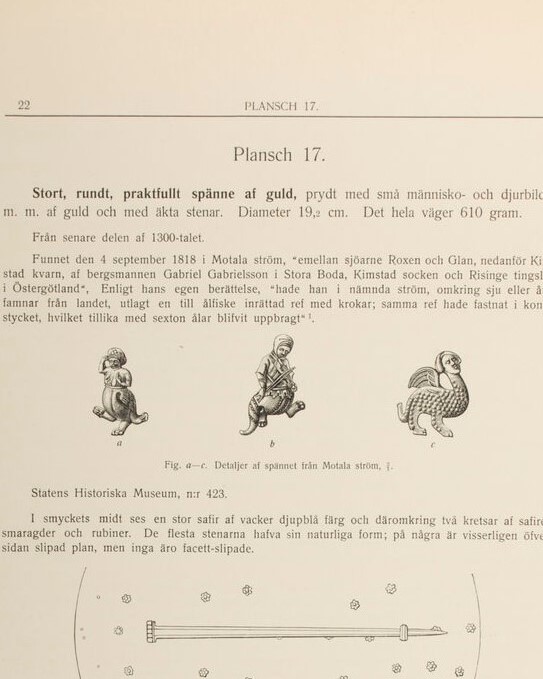
Oscar Montelius, National Antiquarian (1912)
Big, circular, magnificent buckle of gold. Later part of the 14th Century.
Found the 4 September 1818 in Motala stream, between the lakes Roxen and Glan, downstream Kimstad mill, by the mine owner Gabriel Gabrielsson at Stora Boda.
String instruments of the type depicted were known in the 14th Century. Animals, like the eagles, lions and griffins, are often found on works from the same Century. The entire style of the piece concurs with the later part of the 14th Century.
Albeit several of the images embellishing our buckle might be inappropriate in a Christian church, there can be no doubt that this extraordinary piece was intended for a Bishop or another high church official.
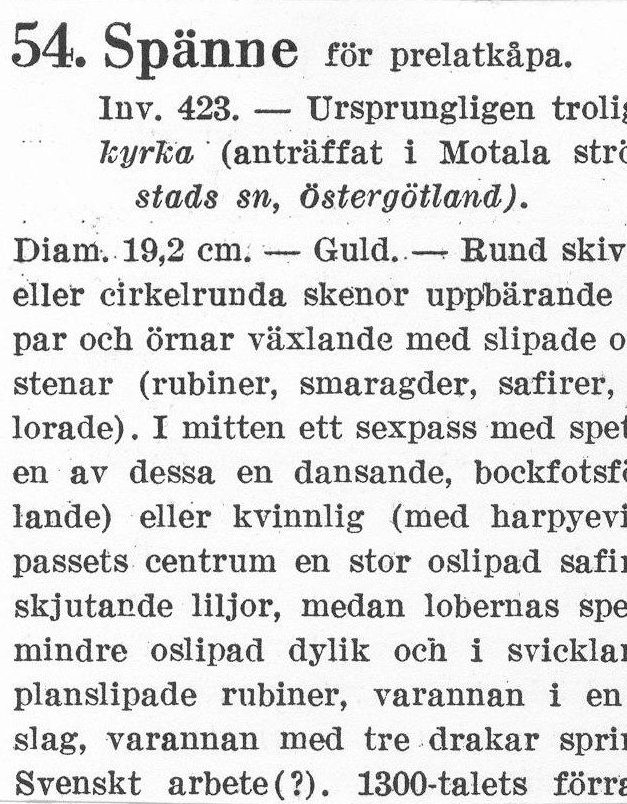
Carl af Ugglas, Art historian (1933)
Buckle for a priest’s robe.
Originally probably belonging to Linköping Cathedral (found in Motala stream by Kimstad mill, Östergötland). Found at the abovementioned site in Motala stream 1818. Redeemed from the finder, mine owner Gabriel Gabrielsson, Stora Boda, for 166 Ducats, 1 Riksdaler, 12 Shilling, 6 Rune pieces.
Swedish manufacture (?) Early or middle 14th Century.
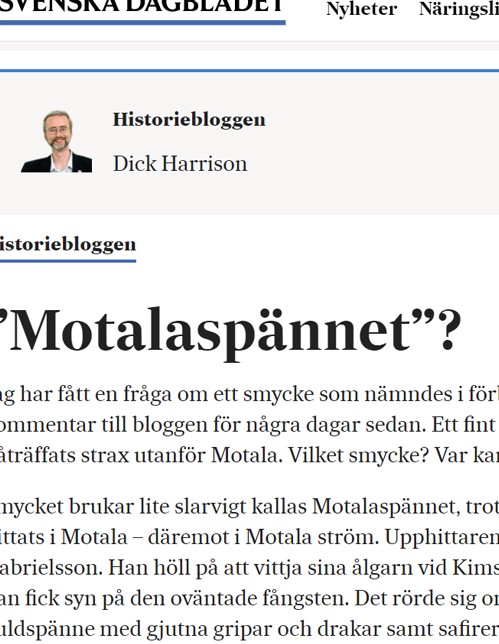
Dick Harrison, Professor of History (2012)
The buckle is often slovenly called the Motala Buckle, although it was never found in Motala. In Motala stream, however. The finder was Gabriel Gabrielsson. He was out eel fishing at Kimstad mill in 1818 when he saw the unexpected catch.
A warning is in place: most that is told about the buckle is guesswork. The fact that it was made by a goldsmith in Paris, is one of them.
Another commonly reoccurring fact is that the buckle once belonged to Queen Blanch (Blanka) of Namur, Magnus Eriksson’s Queen. That the wearer was wealthy is obvious, but we have no other clue to her identity.
Well worth noting is that we have no evidence that the buckle was lost in the water in the 14th Century. It might have found its way into Motala stream at a far later date.
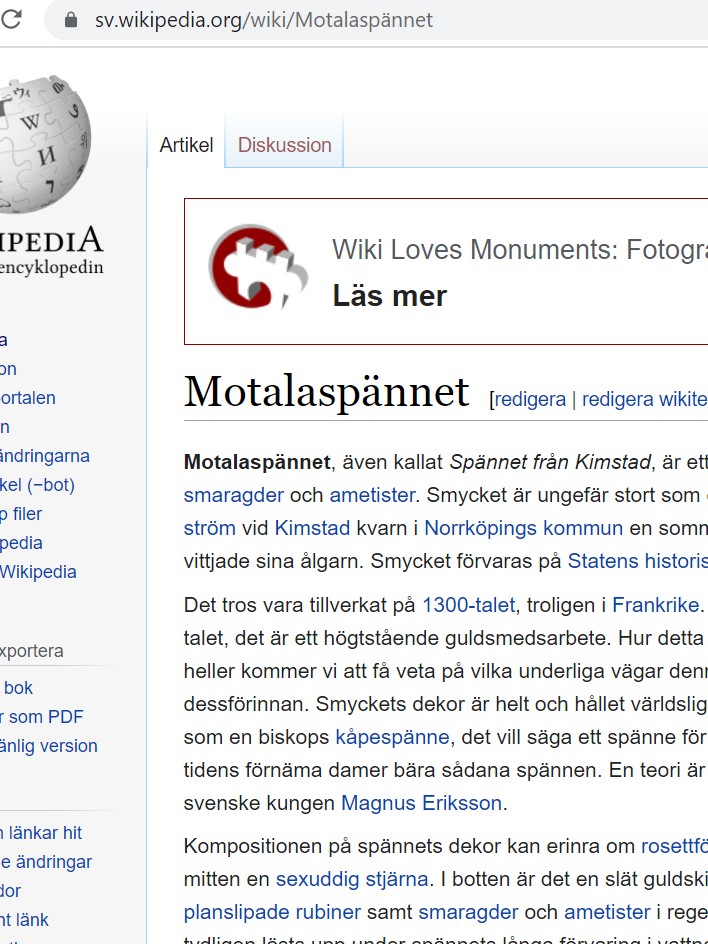
Wikipedia (2021)
It was found in Motala stream by Kimstad mill in Norrköping municipality a summer morning 1818 by the farmer Gabriel Gabrielsson when he searched his eel nets.
It is believed to be manufactured in the 14th Century, probably in France.
How this golden buckle found its way into Motala stream, we will never know. Nor will we know in what mysterious ways this treasure found its way there or who the original owner was.
The buckle’s imagery is entirely worldly, without the slightest indication of ecclesiastical use, but it has been believed to be a Bishop’s robe buckle.
One theory is that it has belonged to Queen Blanka of Namur, married to the Swedish King Magnus Eriksson.

Antikrummet Blogspot (2012)
Its popular name is the Motala Buckle and kept at the History Museum. It is speculated that it once belonged to Queen Blanka of Namur, who became our Queen in 1335. There is a legend that she once rode to her son’s wedding and the buckle was lost somewhere by Motala stream. They searched and searched for the buckle, but eventually gave up.
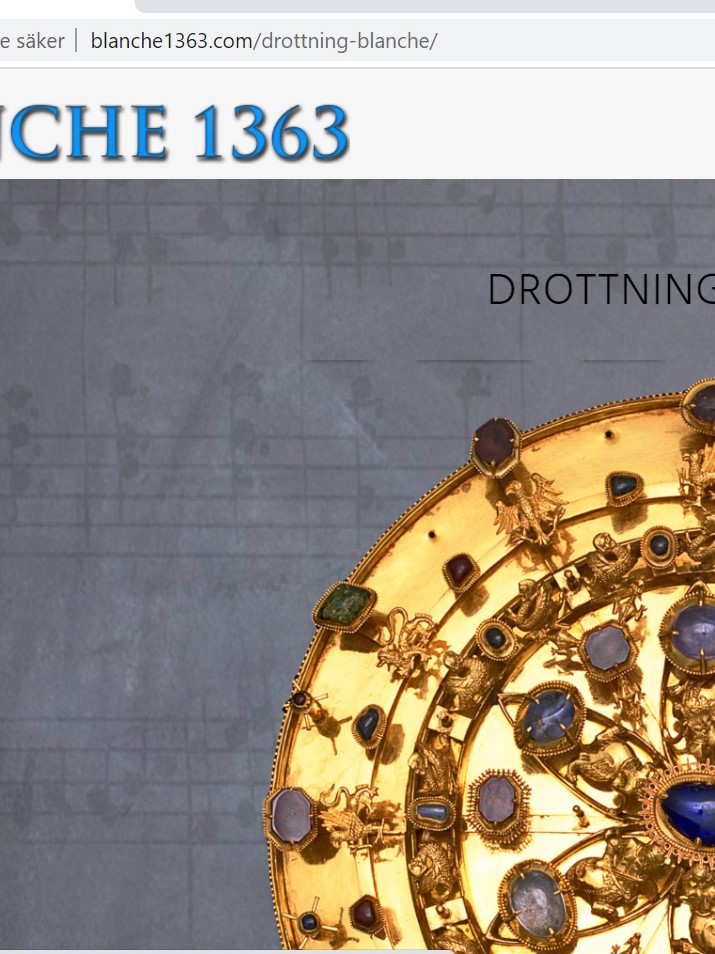
Peter Wiberg, musician and writer (2019)
As far as known this magnificent dress buckle is the only remaining possession after Queen Blanche. Manufactured in a Paris workshop sometime in the first half of the 14th Century, a unique work by a goldsmith.
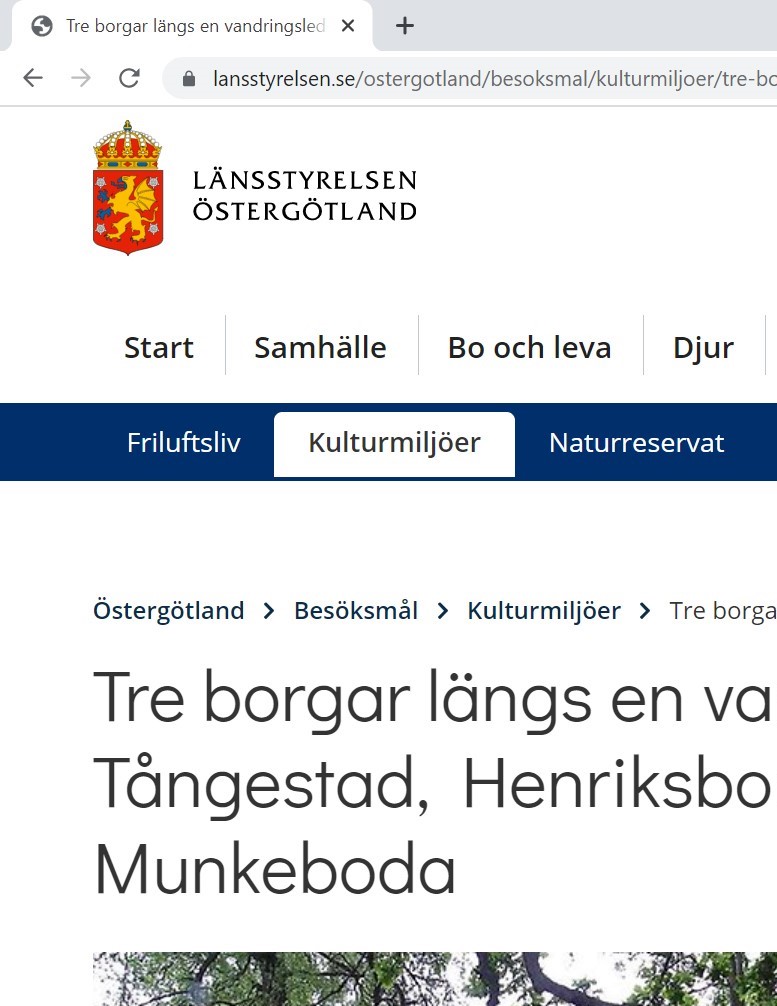
County Östergötland Homepage (2021)
One of the most fantastic finds in Östergötland was made in 1818 when Gabriel Gabrielsson raised his longline by Kimstad mill in Motala stream. Together with the 16 eels, he got an almost two decimetre large gold buckle strewn with gold figures and colourful gemstones.
The buckle can be dated to the beginning of the 14th Century and is most likely a French goldsmith’s work. We do not know who owned the buckle or how it came into the stream. Maybe it was the bishop’s, maybe it belonged to a wealthy lady? One suggestion is that it belonged to Queen Blanka, Blanche of Namur, that is, and it was donated to the church and therefore transferred to Munkeboda.